
English National Ballet
She Persisted: Broken Wings, Nora, Le Sacre du printemps
★★★★✰
London, Sadler’s Wells
4 April 2019
Gallery of pictures by Foteini Christofilopoulou
www.ballet.org.uk
www.sadlerswells.com
Grouping this diverse triple bill under the title She Persisted works in so many ways. While the term itself became a sub-text to the #MeToo movement due to a spat between two US Senators, and thus has relevance to feminist campaigning, it also resonates with several personal significances to English National Ballet.
Feminism is not required in order to be aghast at the stark fact that Tamara Rojo never danced in a work created by a woman during her twelve years at The Royal Ballet. By contrast, since joining ENB, in 2012, her company has presented 28 works by women, including two full-evening programmes by female choreographers. Rojo’s commitment to showcasing dance by women demonstrates a tenacity that defines persistence.

© Foteini Christofilopoulou. (Click image for larger version)
The She Persisted tag also denotes the determination of two women dancers who are elevated into leading roles in this programme. Neither are principals but both danced like stars in the ascendancy. Katja Khaniukova has been stepping up that stairway for some time and this opportunity to open a season at Sadler’s Wells, dancing as Frida Kahlo in Broken Wings, although unfortunately afforded by Rojo’s injury, has been grasped in a heartfelt performance of outstanding quality. Much the same can be said for Crystal Costa (a company member for 12 years), stepping out of perennial soloist vignettes to take the title role in Stina Quagebeur’s Nora, the evening’s world premiere. It was truly uplifting to see these exceptional dancers’ hard work, artistry and persistence achieve a just reward.
Annabelle Lopez Ochoa’s Broken Wings, reprised from the She Said programme of 2016, the forerunner to this triple bill, is a visual treat throughout, beginning with Grayson Perry’s sensational frontcloth with its various phallic motifs (pistols, cacti and “cock-and-balls” graffiti). The costumes – by Dieuweke van Reij – are similarly impressive, bringing Mexico to life in colour and evocative design, with a corps of male Fridas wearing different headdresses of relevance to the life and geography of Kahlo, colourful long skirts and body paint. The Mexican obsession with death (Día de Muertos) is pervasive with sundry skeletons and a wounded deer in the mix.

© Foteini Christofilopoulou. (Click image for larger version)
One sensed that when Rojo premiered the role of Kahlo, in 2016, it was with a considerable personal investment in knowing the life and times of this tragic queen of surrealism. Taking on this mantle, with that precedent, and without her Hispanic antecedents, was quite an ask, but nonetheless, Khaniukova gave an arresting, emotional portrayal as the artist with “broken wings”: the title references Kahlo’s physical problems derived from polio, a transport accident and the eventual amputation of her gangrenous toes and lower right leg. It was a role both powerfully and subtly expressed, particularly in the fluctuating journey of Kahlo’s relationship with Diego Rivera (another charismatic performance by Irek Mukhamedov). Khaniukova’s Kahlo was capricious, playful, vulnerable and hurt, with every sentiment finding the right mark in her eloquent and poignant performance.
Alison McWhinney deserves mention for her winsome duet with Mukhamedov as Diego’s Mistress; as does Barry Drummond for his flirtatious duet with Khaniukova, representing Khalo’s younger, healthier, pre-Rivera days. The success of this one-act work has persuaded the Dutch National Ballet to commission Lopez Ochoa to turn it into a full-evening work, which is definitely one for the diary!

© Foteini Christofilopoulou. (Click image for larger version)
Quagebeur’s choreographic talent was first evidenced with A Room in New York, a duet made in 2015, to illustrate the passionate marriage of the painters Edward Hopper and Josephine Nivision. It impressed her director sufficiently to command this huge prize of the new work in a major programme. Quagebeur turned to Ibsen’s play A Doll’s House, to focus on its central female character, Nora Helmer, as her inspiration. In Ibsen’s narrative, the heroine, having lived the life of perfect wife and mother in an affluent Norwegian household, suddenly deserts her family just hours after decorating the Christmas tree. One might assume that Costa is Quagebeur’s muse, since having impressed in that 2015 duet, she is cast here in the title role.
It is deceivingly tempting, as some audience members around me believed, to comprehend this as a love triangle, but it is essentially a story about trust and money. Nora has borrowed illegally (by forging her father’s signature) in order to fund her husband’s recuperation from illness. The husband, Torvald (an enigmatic performance by Jeffrey Cirio) is a bank manager who has sacked his employee, Krogstad (Junor Souza), who then – knowing of her fraud – blackmails Nora to persuade her husband to reinstate him. When this doesn’t happen, Krogstad reveals her deception to Torvald (instigating a furious sequence of fast turns by Cirio). Instead of supporting his wife, Torvald ungallantly condemns her, thus precipitating Nora’s desertion.
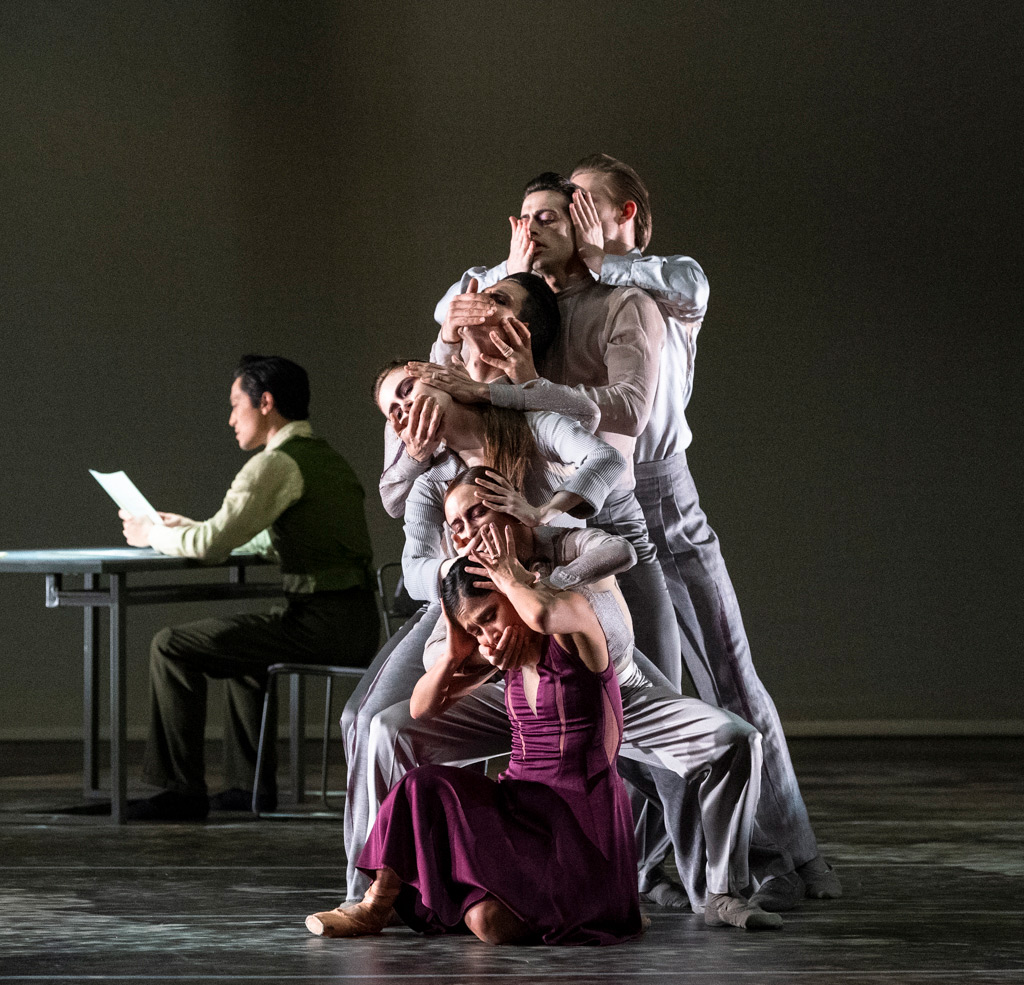
A Doll’s House is a complex story – involving many more sub-plots and characters – but to her great credit, Quagebeur has successfully distilled the essence underlying Nora’s desertion into a capsule ballet, which both resonates with narrative purpose and has a continuing momentum of absorbing, fluid choreography. It is perfectly pitched in terms of length and content, ending with a dramatic flourish. Emphasising the spirit of the programme, Quagebeur’s creative team are all women.
The evening also provided a diverse and majestic musical range. Peter Salem’s original music for Broken Wings seems absolutely on point with the Mexican imagery (including Chavela Vargas’ soulful rendition of the Mexican ranchera song, La Llorona – The Weeping Woman – embedded within the score). Philip Glass’s Tirol Concerto for Piano and Orchestra was the key musical accompaniment for Nora; the small orchestral arrangement providing a suitably minimalist, yet symphonic, range for this chamber ballet. All this led up to the gut-wrenching, visceral impact of Stravinsky’s Le Sacre de Printemps (The Rite of Spring), played with gusto and sensitivity by the ENB Philharmonic, conducted by Gavin Sutherland.
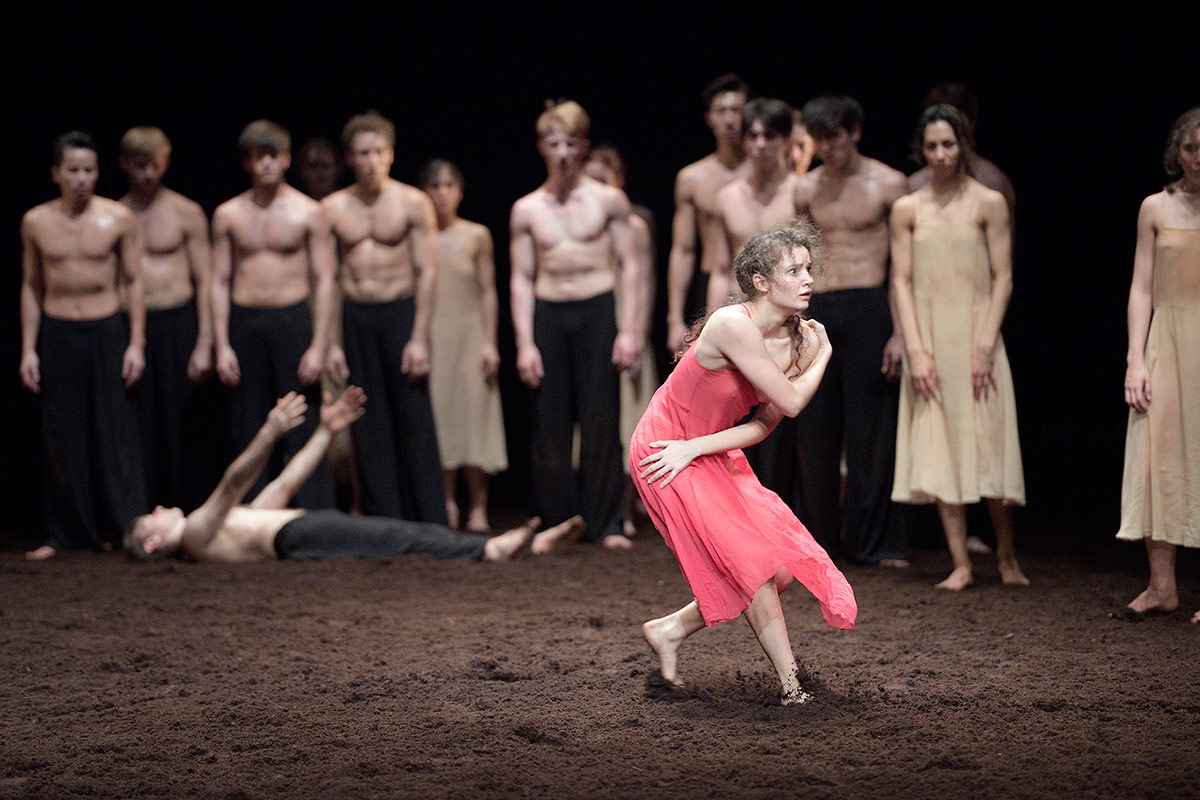
© Laurent Liotardo. (Click image for larger version)
It is two years since Farooq Chaudhry’s negotiating skills brought Pina Bausch’s extraordinary interpretation of The Rite of Spring to be danced by ENB. Those performances earned an Olivier Award for Francesca Velicu (as the Chosen One). Unsurprisingly, Velicu reprised the role here (though, as tradition dictates, uncredited as such in the cast list) and with the same intensity that won her that Olivier. She was left mentally and physically exhausted by the end, the emotion continuing into her curtain call.
Bausch’s production is one of the great dance works of the last fifty years. Monumental in scale (the stage covered in peat helps) and with choreography that fits every second of the music, creating indelible imagery and patterns. The ENB ensemble – James Streeter to the fore – has grown into this work, or perhaps, I should say – in view of the weightiness required – that they have sunk into it. In any event, this was an outstanding performance of extraordinary art, completing a memorable evening of diverse dance.












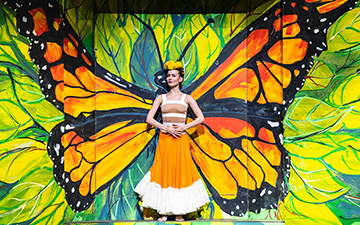

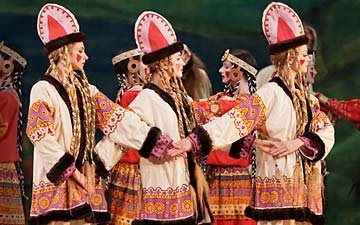
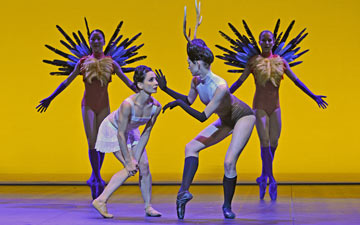
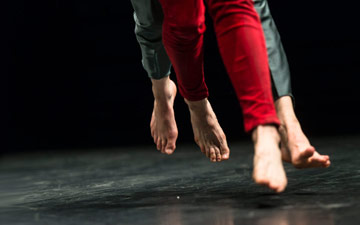
You must be logged in to post a comment.